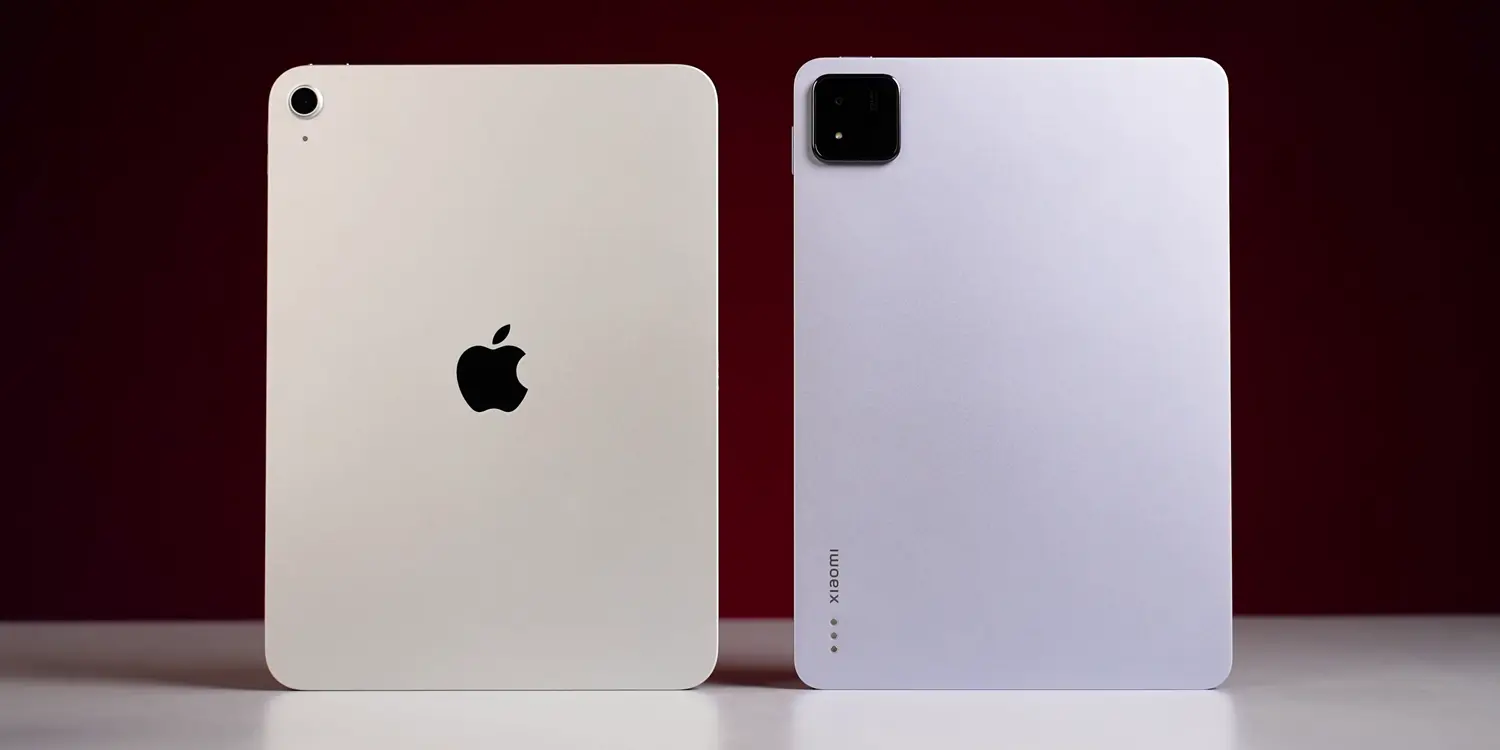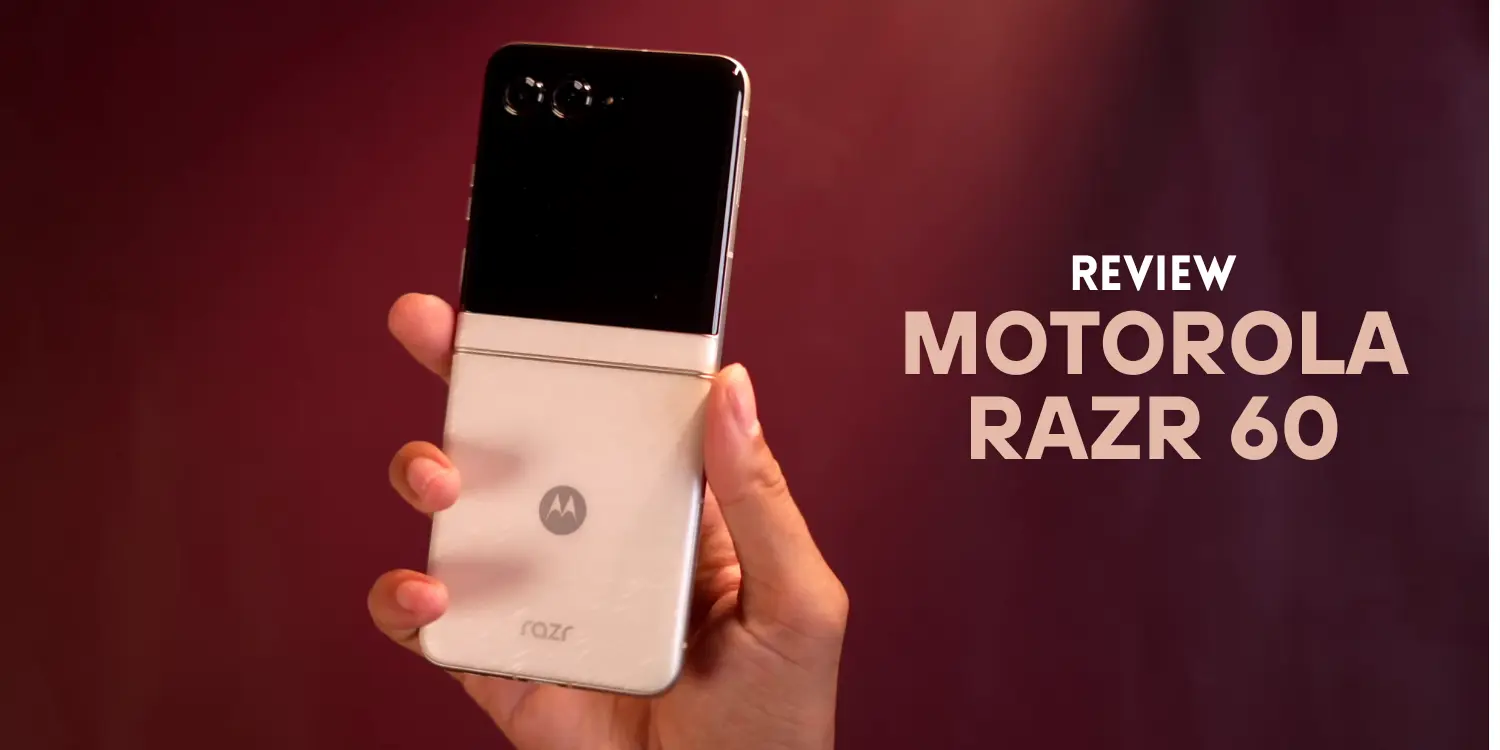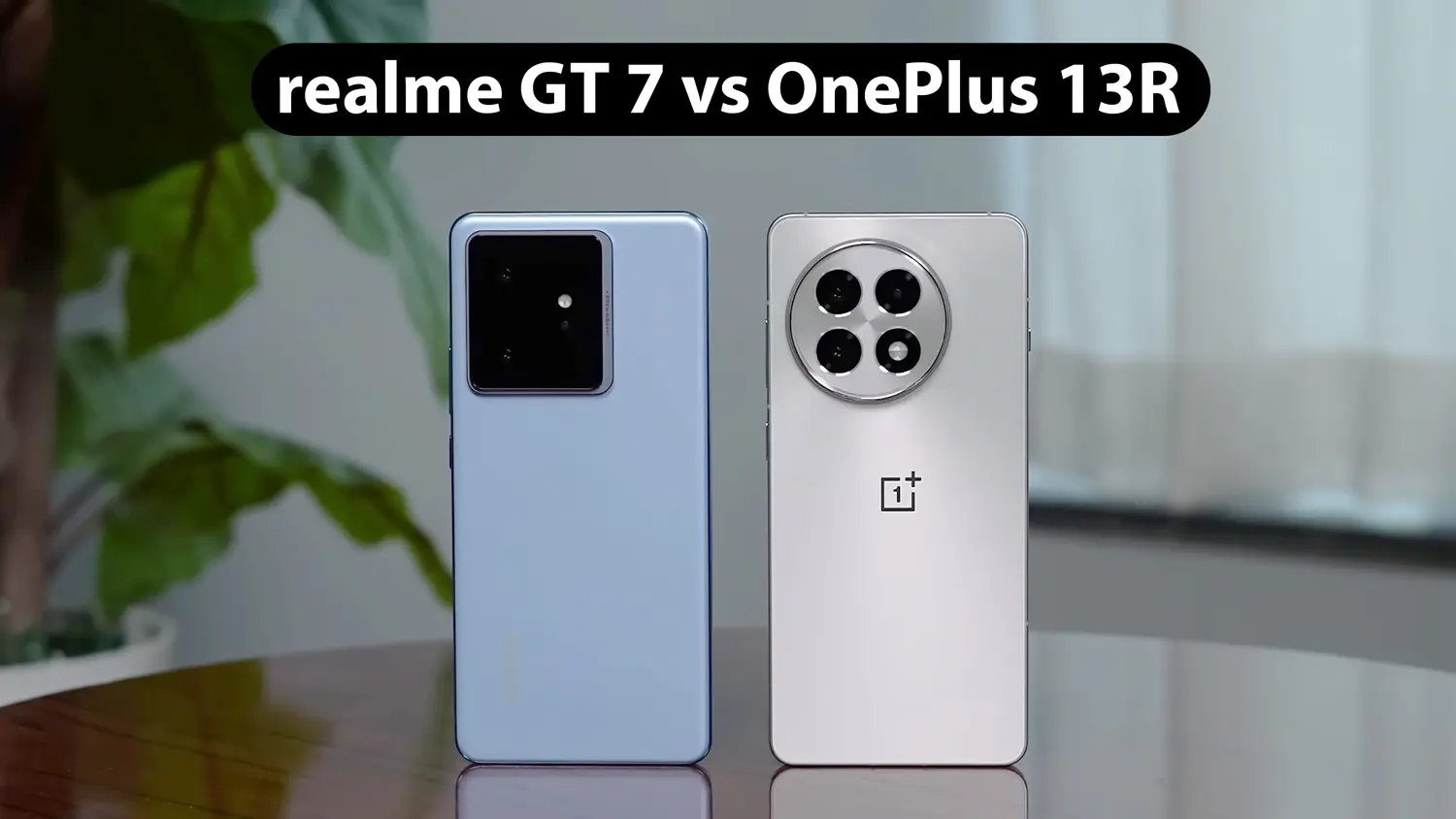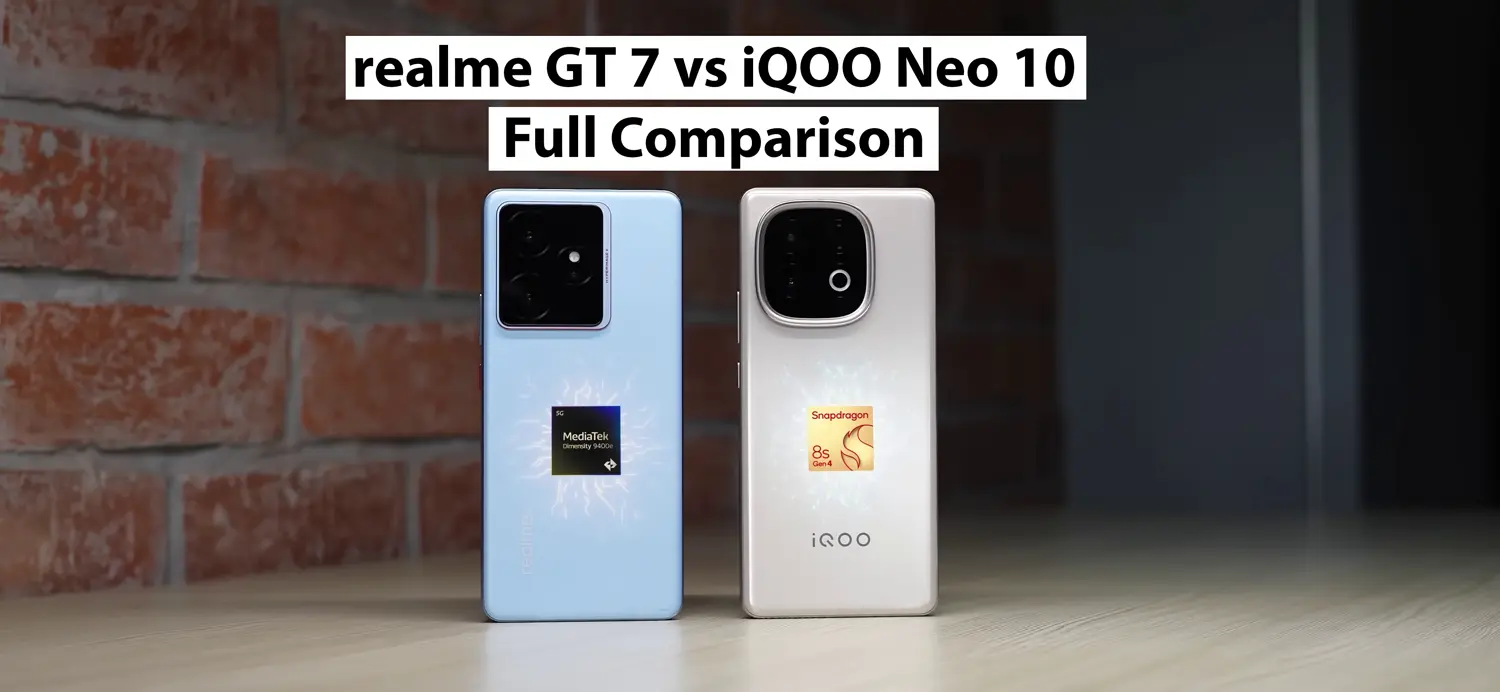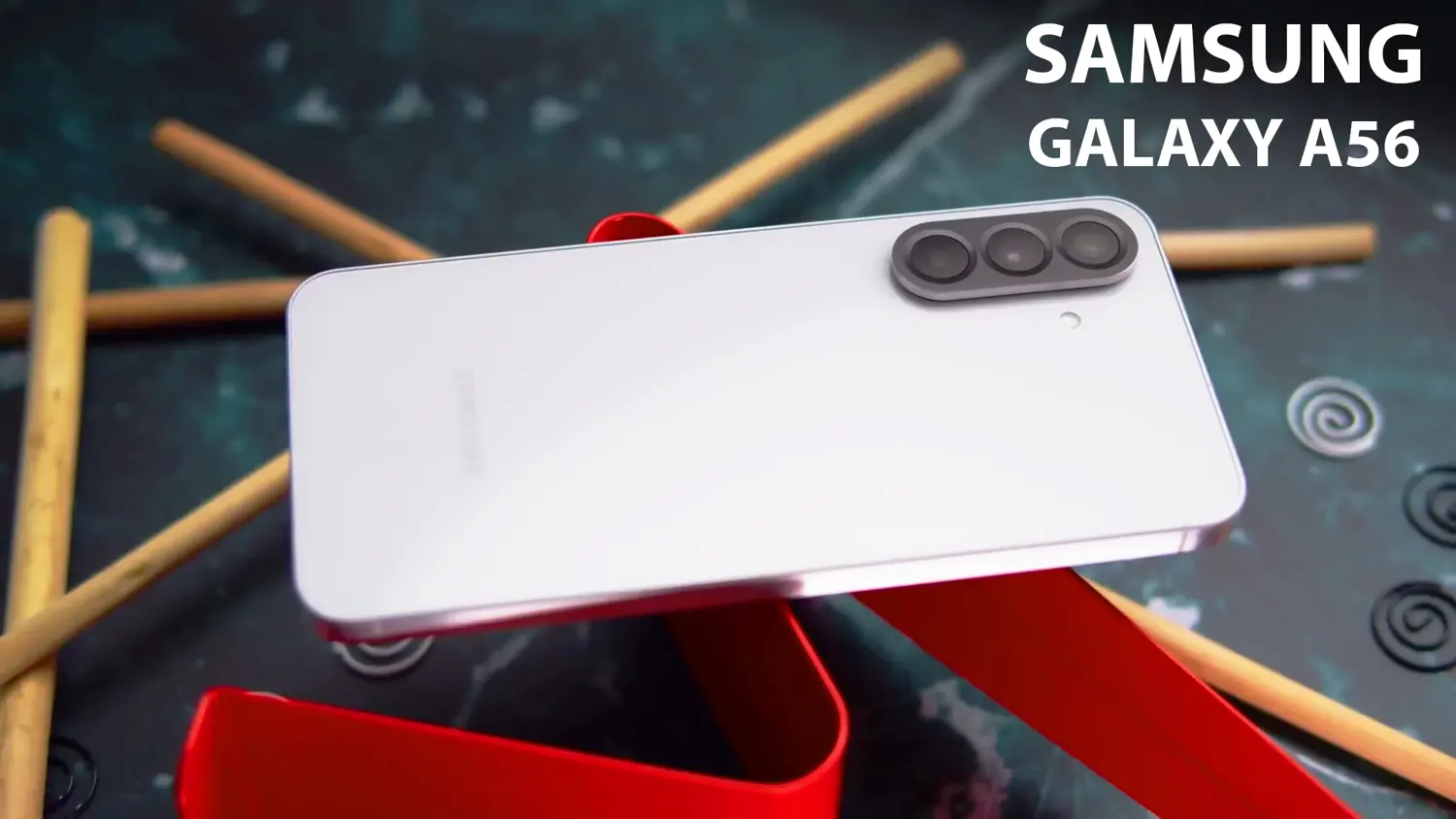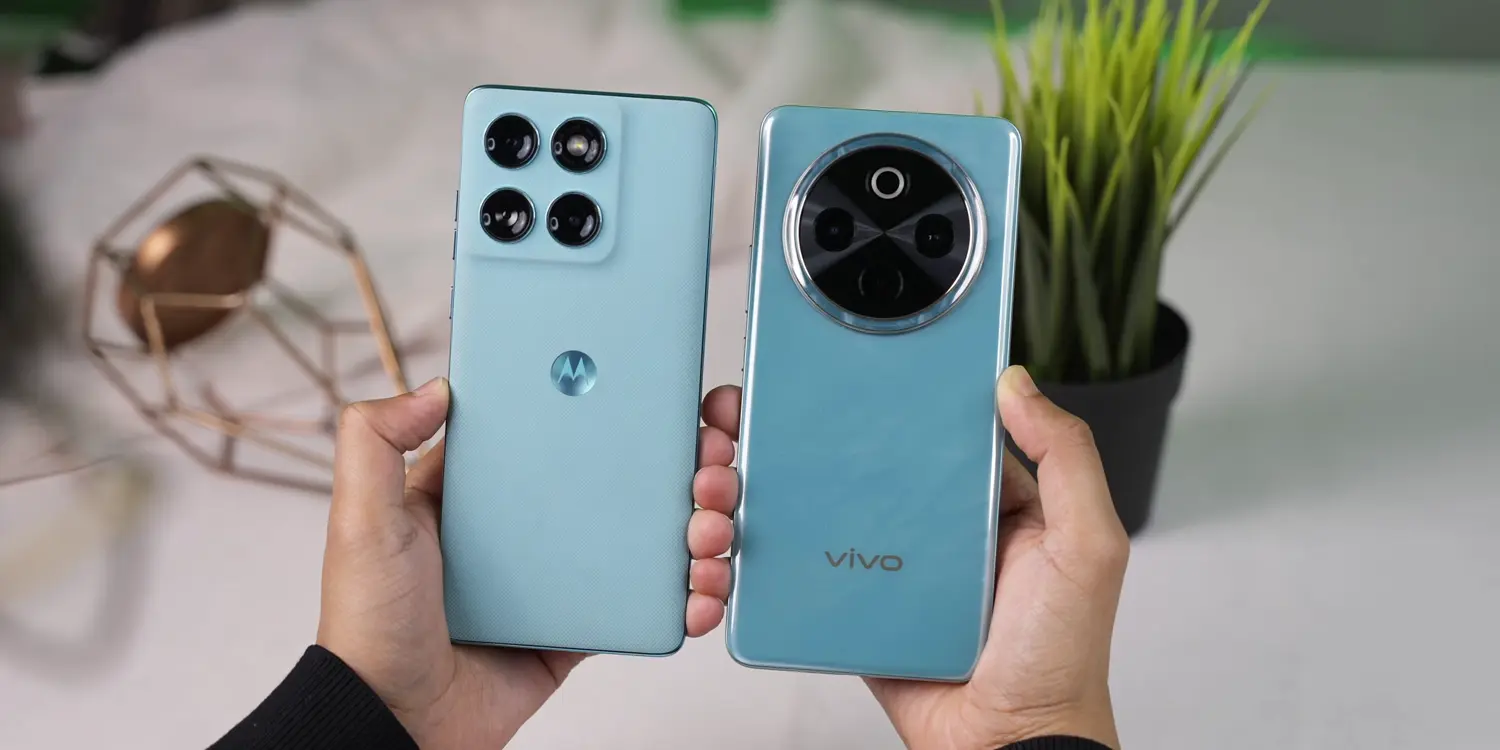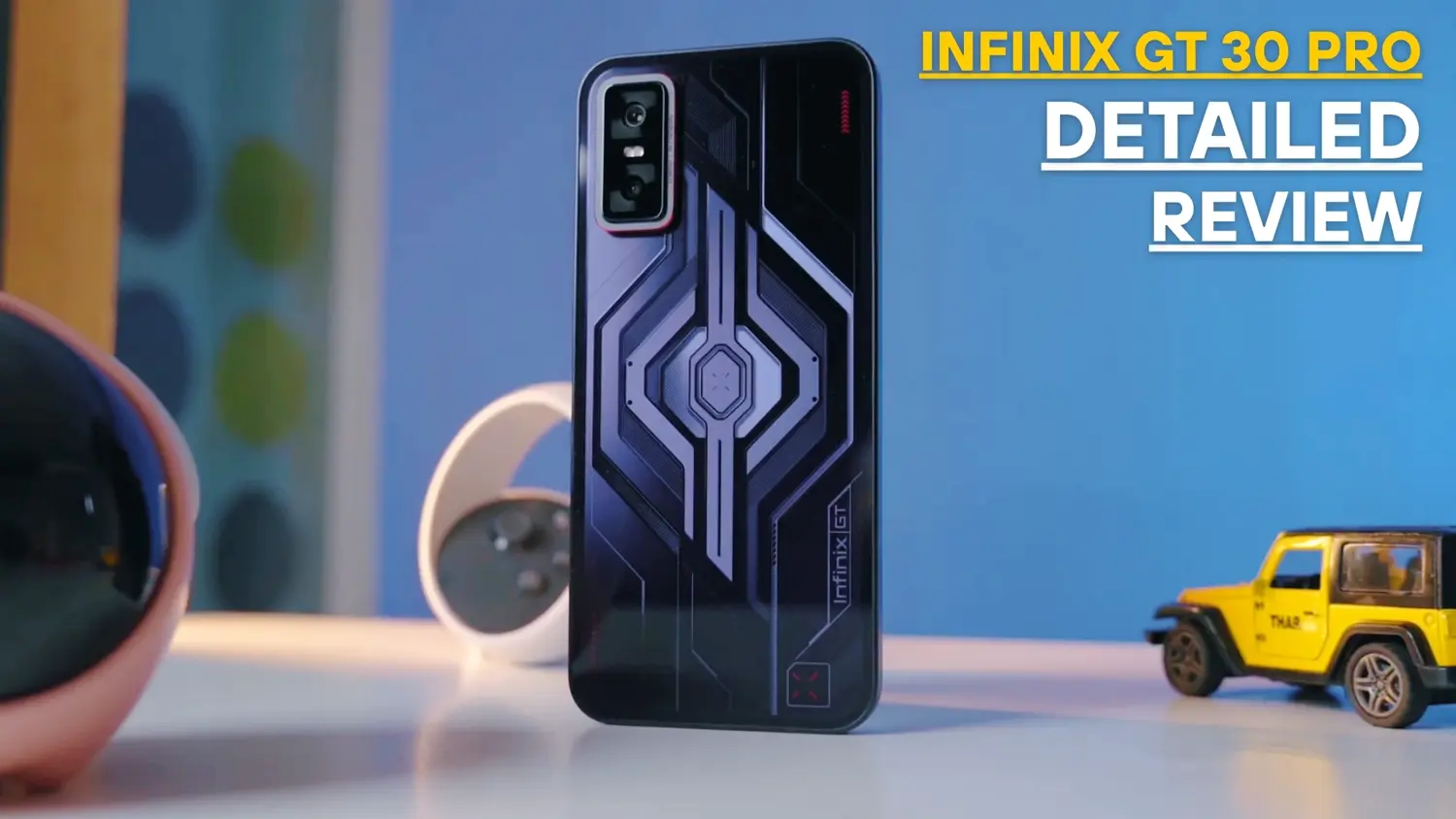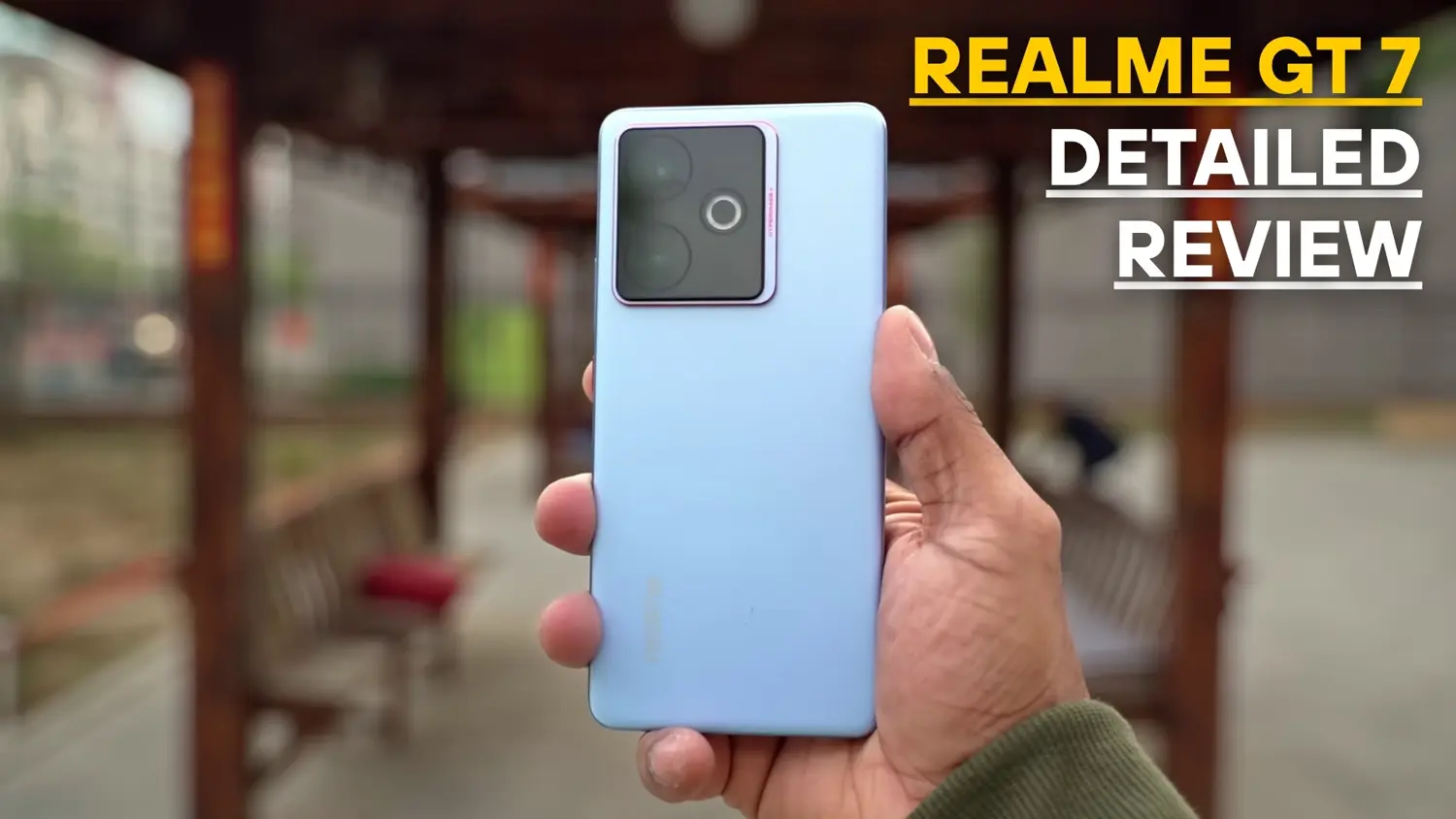Choosing the right tablet can be tough, especially when you have two great options like the Xiaomi Pad 7 and the 11th Gen iPad. Both tablets are packed with features, but they cater to slightly different needs and budgets. If you’re in India and have around ₹30,000 to ₹35,000 to spend, you might be wondering which one offers better value for your money. In this article, we’ll compare the Xiaomi Pad 7 and the 11th Gen iPad across design, display, performance, software, and more to help you make an informed decision. By the end, you’ll know which tablet is the better pick for you.
Why This Comparison Matters
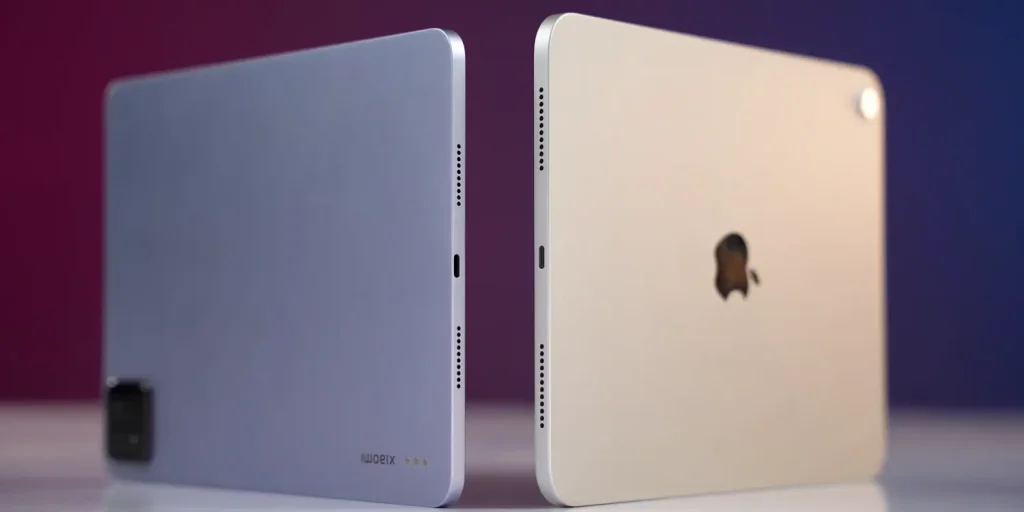
Tablets have become essential for students, professionals, and casual users alike. Whether it’s for studying, working, gaming, or binge-watching Netflix, a good tablet can do it all. The Xiaomi Pad 7, priced at around ₹28,000, is a budget-friendly Android tablet that promises premium features. On the other hand, the 11th Gen iPad, priced slightly higher, is Apple’s entry-level tablet known for its ecosystem and reliability. Both are value-for-money options, but which one should you buy? Let’s break it down step by step.
Design and Build Quality
Both the Xiaomi Pad 7 and the 11th Gen iPad have premium designs that feel solid and look stylish. They feature all-metal bodies, giving them a high-end feel despite their affordable price tags. You also get a variety of color options to choose from, so you can pick one that matches your style.
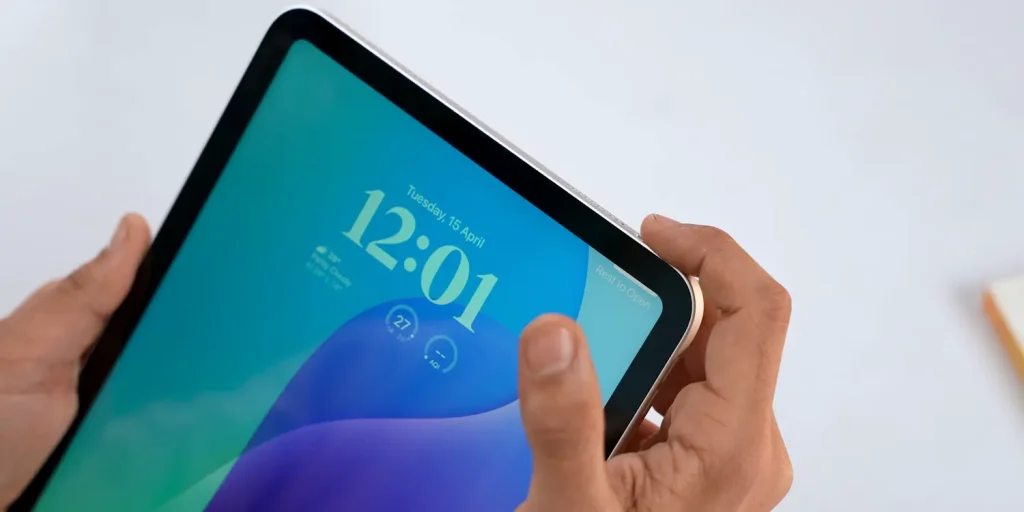
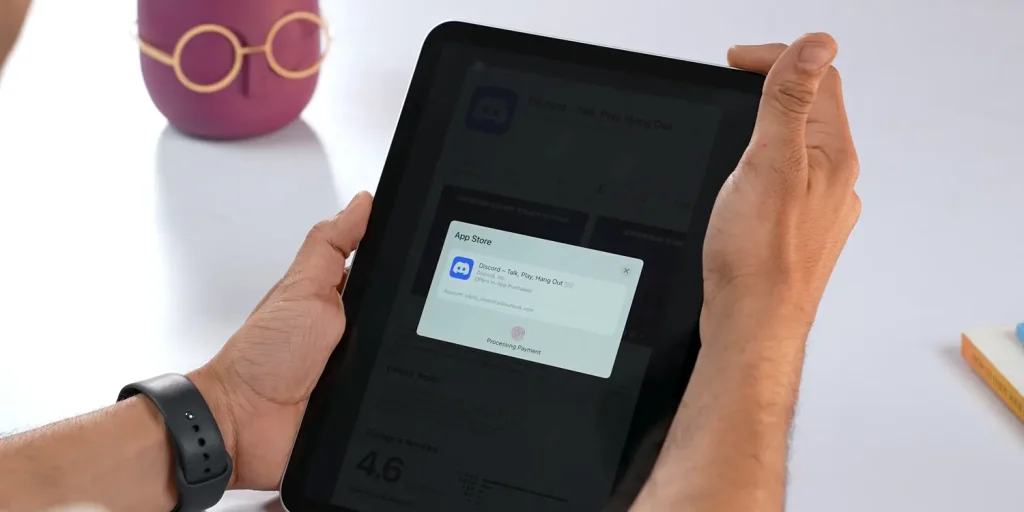
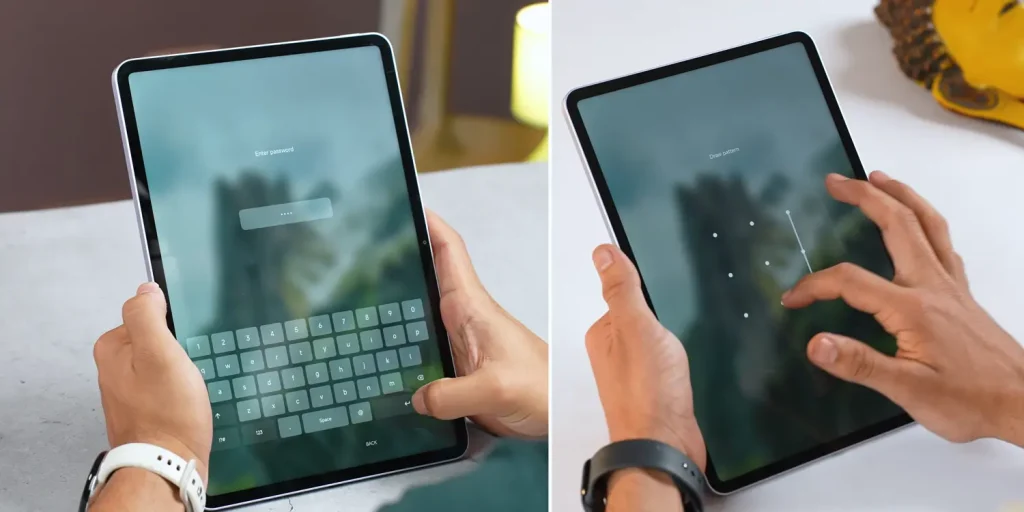
However, there are a couple of differences worth noting. The Xiaomi Pad 7 is slightly heavier than the iPad, but the difference is so small that you’re unlikely to notice it during daily use or when carrying it in a backpack. The iPad has a fingerprint sensor, which makes unlocking the device and approving app purchases quick and secure. The Xiaomi Pad 7, on the other hand, relies on pins, patterns, or passwords for unlocking, which might feel less convenient.
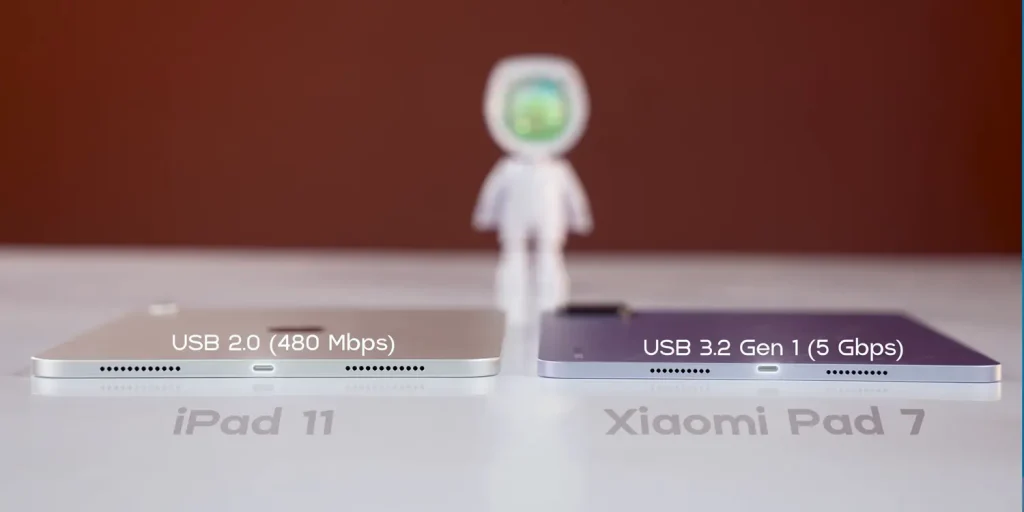
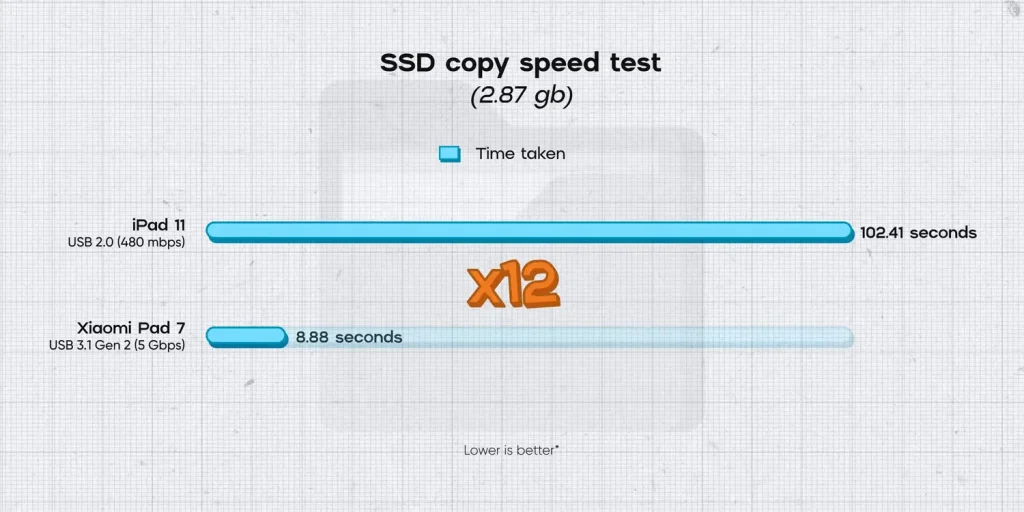
Another key difference is the USB port. The Xiaomi Pad 7 comes with a USB 3.2 Gen 1 port that supports data transfer speeds of up to 5 Gbps. This makes copying files from an external drive, like a Samsung T9 SSD, much faster—almost 12 times faster than the iPad’s USB-C port, which is limited to 480 Mbps. For example, transferring a 3GB file is a breeze on the Xiaomi but takes much longer on the iPad.
Verdict: Both tablets have excellent designs, but the iPad gets a point for the fingerprint sensor, while the Xiaomi Pad 7 wins for its faster USB port. It’s a tie in this category.
Display Quality
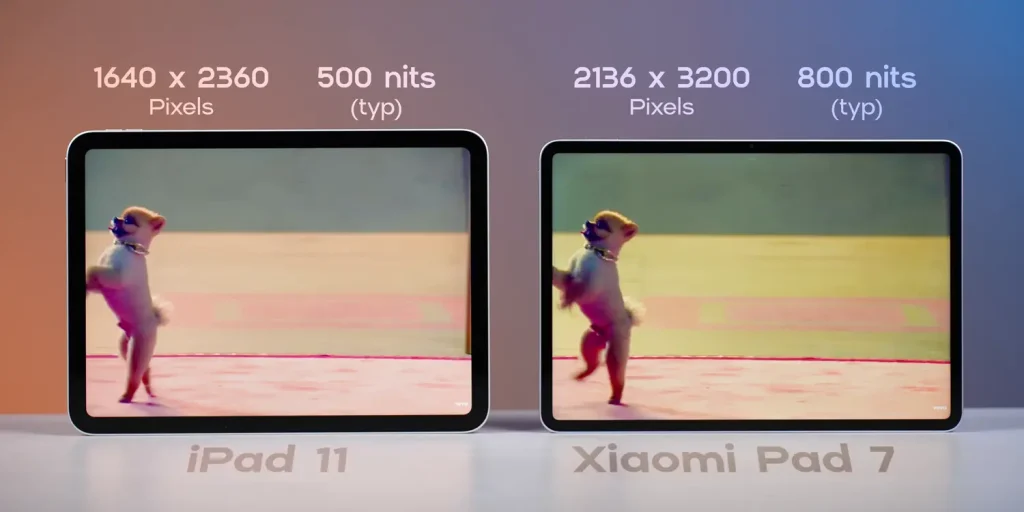
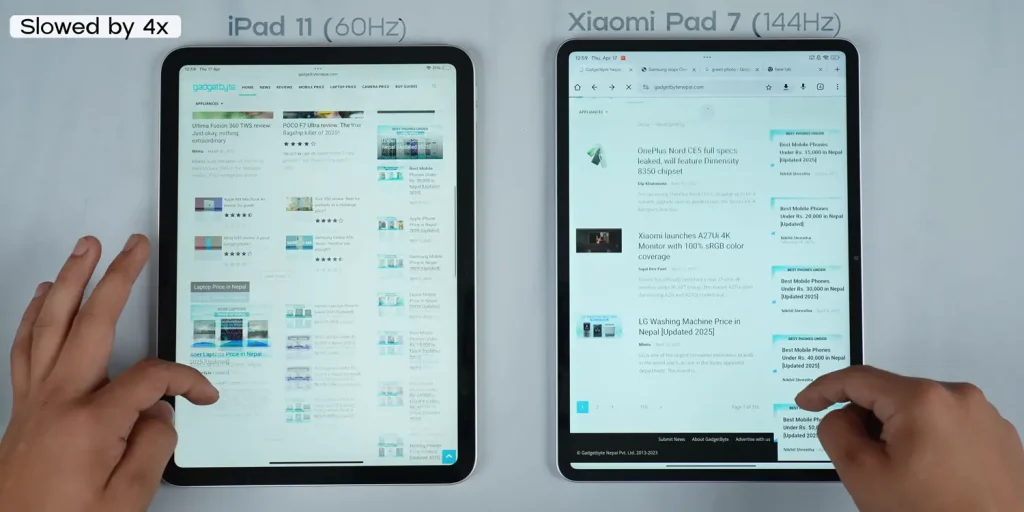
When it comes to the display, the Xiaomi Pad 7 takes a clear lead. It features a 3.2K resolution display with a 144 Hz refresh rate, which makes everything from scrolling through social media to gaming feel incredibly smooth. The display also reaches a peak brightness of 800 nits, ensuring good visibility even in bright environments. Additionally, the Xiaomi Pad 7 supports Dolby Vision for Netflix, which enhances the viewing experience with vibrant colors and deeper contrasts.
In contrast, the 11th Gen iPad has a 60 Hz display with a lower resolution and 500 nits of brightness. While the iPad’s display is color-accurate and works well indoors, the 60 Hz refresh rate feels outdated, especially when browsing or scrolling. The bezels on the iPad are also thicker compared to the slimmer bezels on the Xiaomi Pad 7, giving the latter a more modern look.

For an extra ₹5,000, you can opt for a nano-texture display on the Xiaomi Pad 7, which reduces reflections and glare—a feature typically found on Apple’s premium iPad Pro models. This makes the Xiaomi Pad 7 a better choice for outdoor use or creative tasks.
Verdict: The Xiaomi Pad 7 wins this round with its sharper, smoother, and brighter display.
Audio Performance

Audio is another area where the Xiaomi Pad 7 shines. It comes with quad speakers that deliver loud, detailed sound with a surprising amount of bass. Whether you’re watching movies or listening to music, the audio feels rich and immersive. The iPad, on the other hand, has stereo speakers that are decent but lack the depth and punch of the Xiaomi’s setup.
Verdict: The Xiaomi Pad 7 is the clear winner for audio quality.
Camera Performance
While tablets aren’t typically used for photography, the front-facing camera is important for video calls. The 11th Gen iPad has a better front camera with a wider field of view and sharper details. It also supports Apple’s Center Stage feature, which keeps you in the frame even if you move around during a call. The Xiaomi Pad 7’s front camera is good but lacks a similar feature, which is surprising since the older Xiaomi Pad 6 had something called Focus Frame.
The rear cameras on both tablets are decent for casual use, but neither is exceptional. If video calls are a priority, the iPad has an edge.
Verdict: The iPad takes the point for better camera performance.
Battery Life and Charging
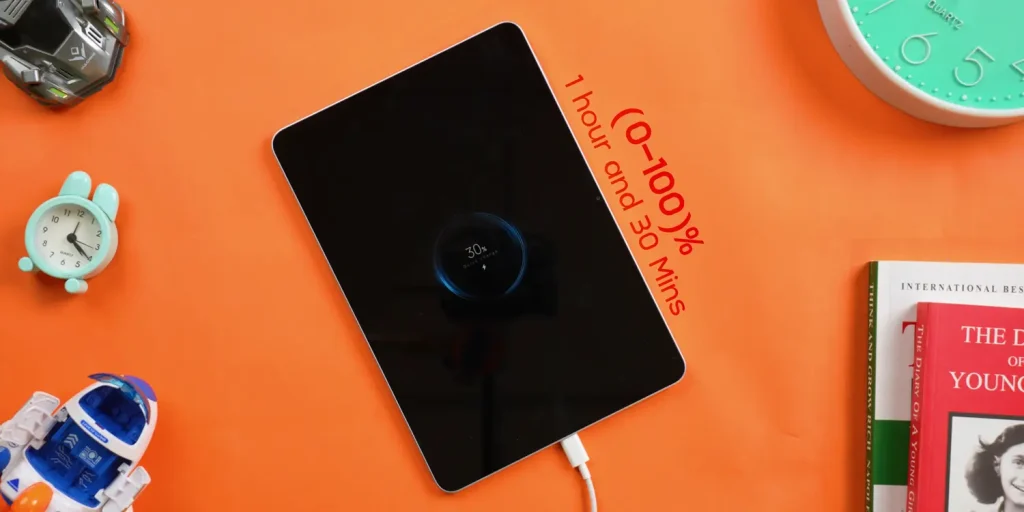
Both tablets offer similar battery life, lasting around 8 to 9 hours of screen time with mixed usage, such as watching YouTube, attending video calls, or light gaming. In a test involving an hour of YouTube playback, an hour of Google Meet, and 30 minutes of gaming, both tablets lost a comparable amount of battery.
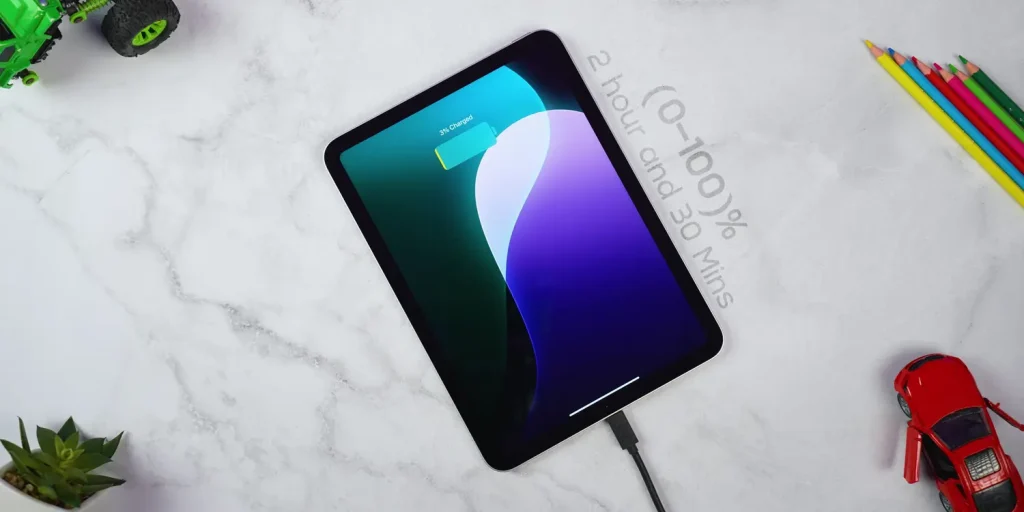
However, the Xiaomi Pad 7 charges much faster. It comes with a 45W charger that takes the tablet from 1% to 100% in about 1.5 hours. The iPad, with its 20W charger, takes around 2.5 hours to fully charge, which is noticeably slower.
Verdict: The Xiaomi Pad 7 wins for faster charging, while battery life is a tie.
Performance
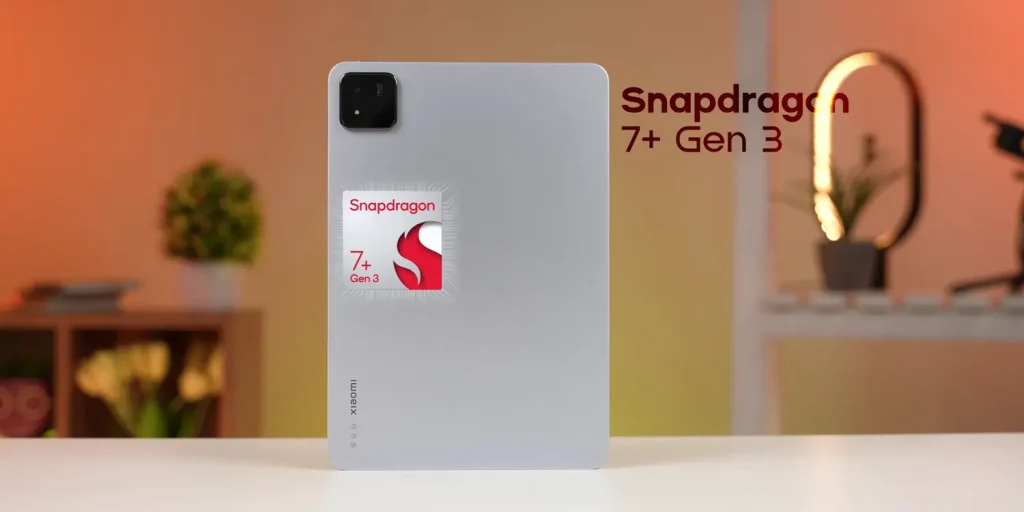

Performance is where things get interesting. The Xiaomi Pad 7 is powered by the Qualcomm Snapdragon 7 Plus Gen 3, a mid-range chip that sits between the Snapdragon 8 Gen 2 and 8s Gen 3 in terms of power. The 11th Gen iPad uses a toned-down version of the A16 Bionic chip (the same chip as the iPhone 15 but with one fewer CPU and GPU core).
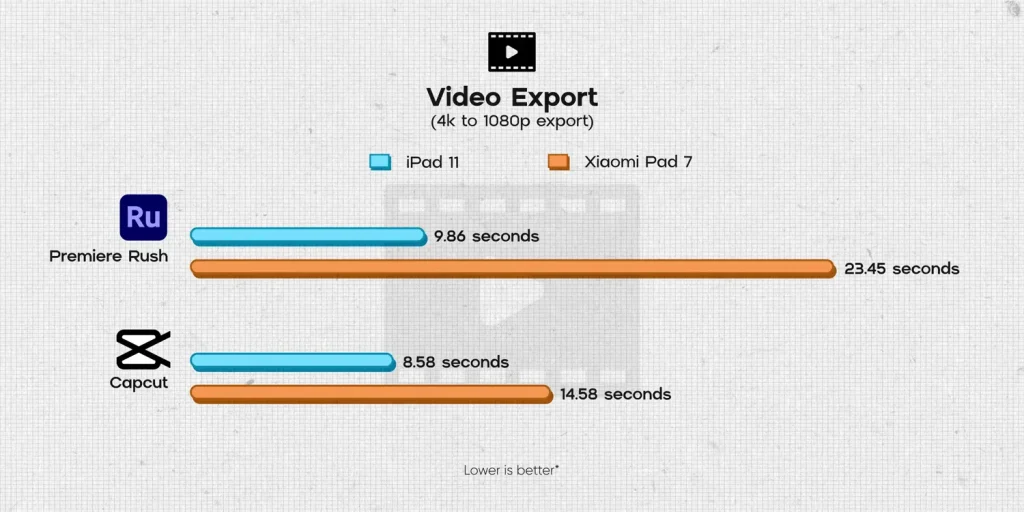
For everyday tasks like browsing, streaming, or note-taking, both tablets perform smoothly. However, the iPad’s A16 chip is significantly more powerful for CPU-intensive tasks. For example, editing and exporting a 4K video in apps like CapCut or Adobe Premiere Rush is faster on the iPad.
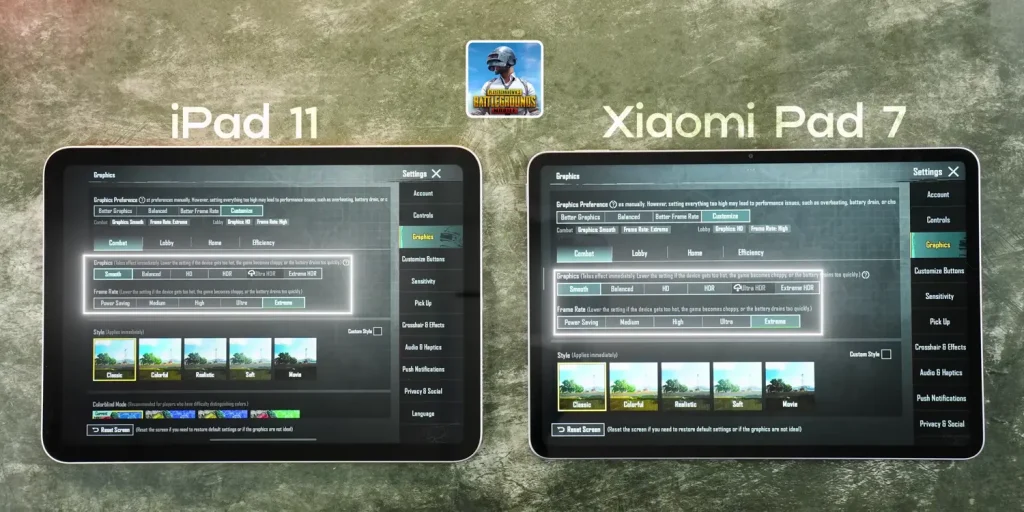
Gaming performance is surprisingly similar on both devices. The Xiaomi Pad 7 has a faster GPU and a higher refresh rate display, which should give it an edge. However, Xiaomi hasn’t fully optimized the tablet for high-FPS gaming in titles like PUBG or Mobile Legends, so the experience feels comparable to the iPad.
Verdict: The iPad gets a slight edge for CPU performance, but gaming is a tie.
Software Experience
Software can make or break a tablet, and here, the Xiaomi Pad 7 stands out. It runs Hyper OS 2.0, which is smooth, intuitive, and optimized for large screens. Features like saving app pairs (e.g., Chrome and a note-taking app) for one-tap multitasking make it a productivity powerhouse. The software also includes AI features like text generation, proofreading, and doodle-to-art conversion, adding a fun and practical touch.
The 11th Gen iPad runs iPadOS, which looks polished and integrates seamlessly with other Apple devices. However, it feels less intuitive for multitasking compared to Hyper OS. For example, launching two apps side by side requires manual setup every time, and the lack of a universal back gesture can be frustrating. The iPad also misses out on Apple Intelligence features, which is a letdown for a 2025 device.
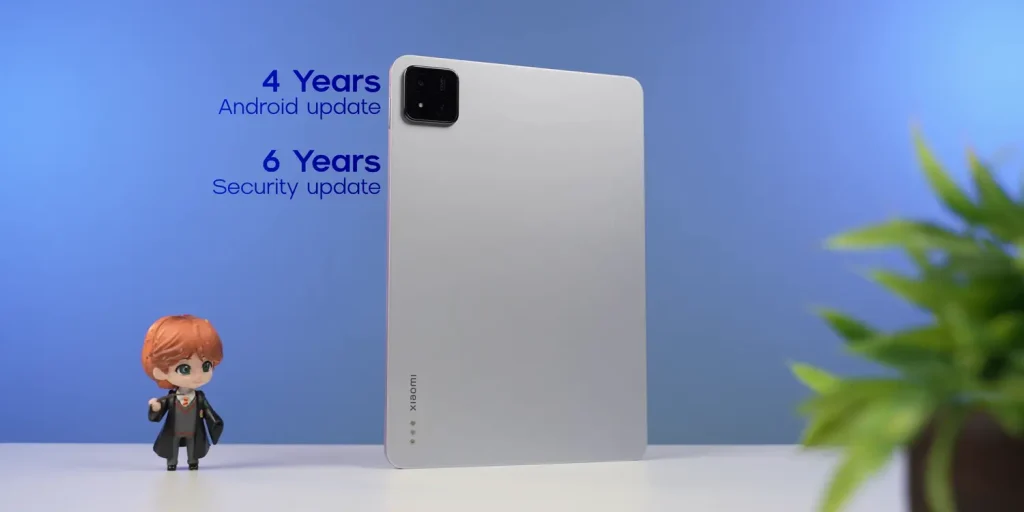
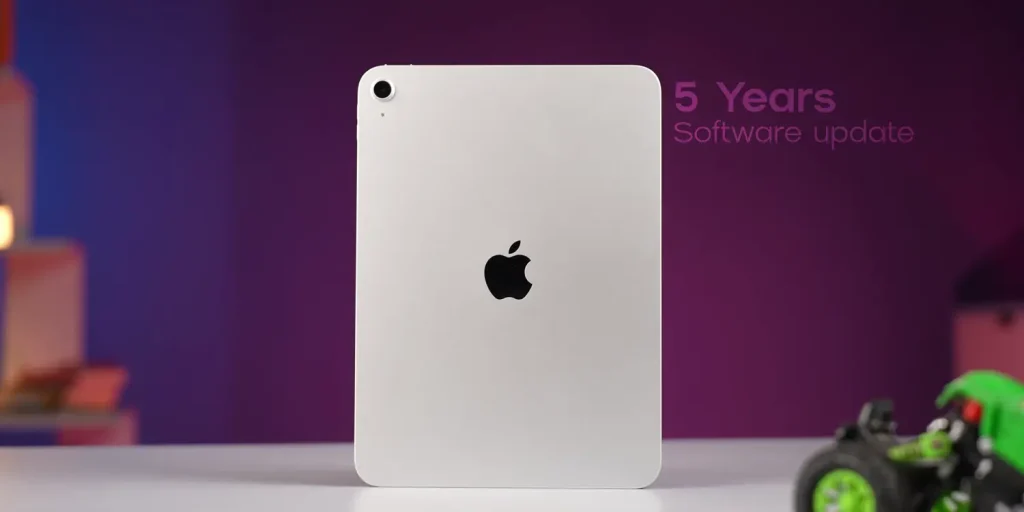
In terms of updates, Xiaomi promises 4 years of major Android upgrades and 6 years of security updates for the Pad 7. Apple typically supports its devices for at least 5 years, but the Xiaomi’s clear commitment and superior software experience give it an edge.
Verdict: The Xiaomi Pad 7 wins for its better software and update policy.
Accessories and Ecosystem
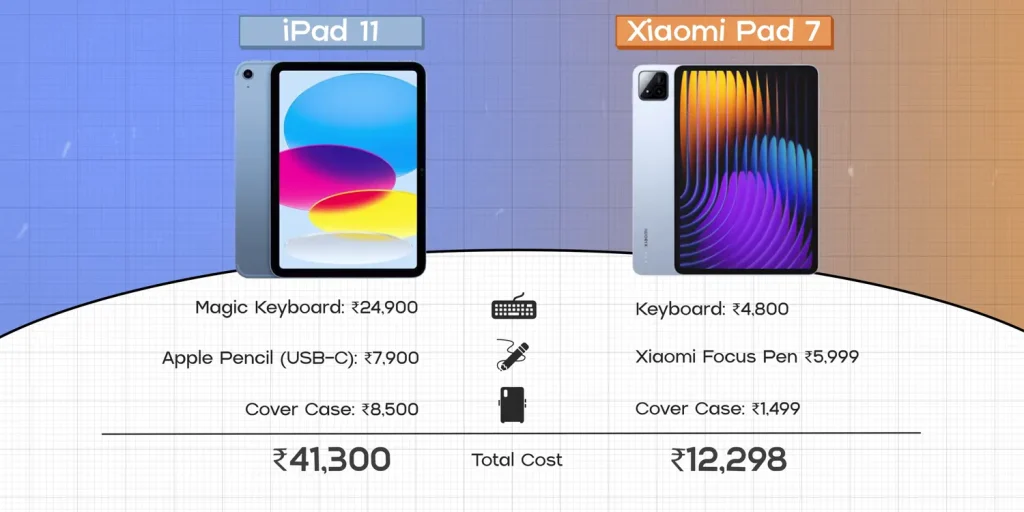
The Xiaomi Pad 7 supports a stylus and keyboard, which are significantly cheaper than Apple’s accessories. This makes it a great option for students or creatives on a budget. The iPad, however, benefits from Apple’s ecosystem, making it a better choice if you already own an iPhone, Mac, or AirPods. Features like AirDrop and Continuity make the iPad a seamless extension of your Apple devices.
Verdict: The Xiaomi Pad 7 wins for affordability, but the iPad is better for Apple ecosystem users.
Price and Value for Money

The Xiaomi Pad 7, priced at around ₹28,000, is about 25% cheaper than the 11th Gen iPad, which costs closer to ₹35,000. For the price, the Xiaomi offers a better display, faster charging, superior audio, and a more intuitive software experience. The iPad, while excellent, feels slightly overpriced for what it offers, especially with its 60 Hz display and slower charging.
Verdict: The Xiaomi Pad 7 is the better value-for-money option.
Specification Comparison Table
| Feature | Xiaomi Pad 7 | 11th Gen iPad |
|---|---|---|
| Price (Approx.) | ₹28,000 | ₹35,000 |
| Display | 3.2K, 144 Hz, 800 nits, Dolby Vision | Retina, 60 Hz, 500 nits |
| Processor | Snapdragon 7 Plus Gen 3 | A16 Bionic (low-bin) |
| USB Port | USB 3.2 Gen 1 (5 Gbps) | USB-C (480 Mbps) |
| Charging | 45W (1.5 hours) | 20W (2.5 hours) |
| Speakers | Quad speakers with bass | Stereo speakers |
| Front Camera | Standard | Wide-angle with Center Stage |
| Battery Life | 8–9 hours | 8–9 hours |
| Software | Hyper OS 2.0, 4 years updates | iPadOS, ~5 years updates |
| Fingerprint Sensor | No | Yes |
Final Verdict: Which Should You Buy?
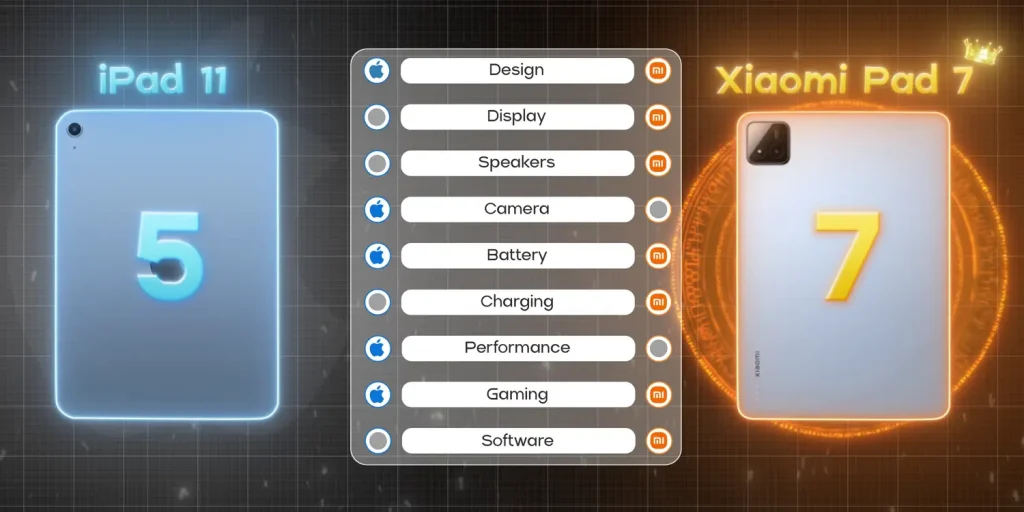
After comparing the Xiaomi Pad 7 and the 11th Gen iPad, it’s clear that the Xiaomi Pad 7 is the better tablet for most people. It offers a sharper and smoother display, richer audio, faster charging, and a more intuitive software experience—all at a lower price. The iPad excels in camera performance and CPU power, and it’s a great choice if you’re deeply invested in the Apple ecosystem. However, for students, casual users, or anyone looking for maximum value, the Xiaomi Pad 7 is hard to beat.
If you’re on a budget and want a tablet that does everything well, go for the Xiaomi Pad 7. If you’re an Apple user who values ecosystem integration, the 11th Gen iPad is a solid pick. Either way, you’re getting a great tablet, but the Xiaomi Pad 7 offers more bang for your buck.
